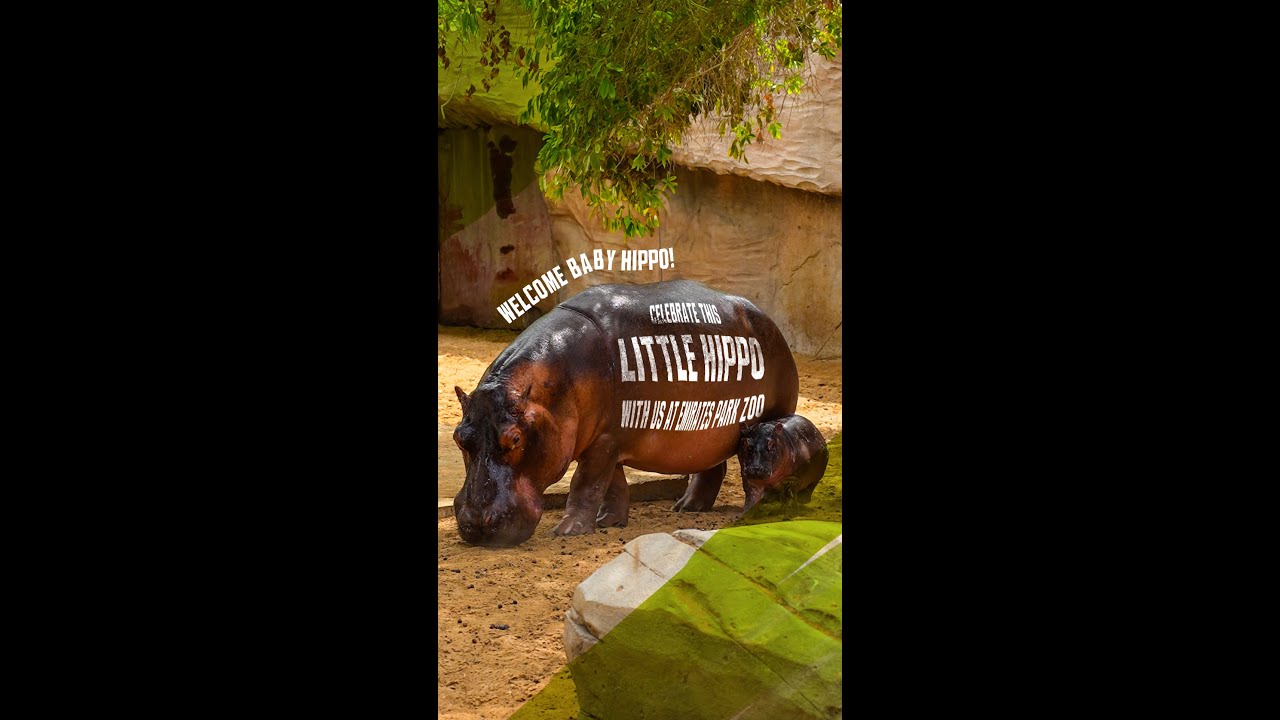- Otto and Najuma, two popular hippos in wildlife conservation, have given birth, prompting attention around hippopotamus breeding behaviors and family dynamics.
- The importance of zoology, zoo management, and conservation efforts in supporting hippopotamus populations is critical to their survival and well-being.
- The role of zoos in conservation, research, and education, particularly concerning species with specialized needs like hippos.
- The human impact on hippo habitats and ongoing conservation strategies across the globe to safeguard these incredible animals.
- Video documentation of wildlife birth events enhances public awareness and appreciation of animal behavior and conservation issues.
Otto and Najuma, the prominent residents of a beloved zoo, have recently become the proud parents of a delightful new addition to their family. This momentous birth offers not only a heartwarming glimpse into the lives of these charismatic large animals but also presents an opportunity to delve into the fascinating world of hippopotamus biology and conservation. As we journey through the story of Otto and Najuma and their precious calf, we explore the intricacies of hippo social structures, the pivotal role of modern zoological institutions, and the broader context of wildlife conservation.
Hippopotamuses, with their iconic large mouths and semi-aquatic lifestyle, are an essential part of many African ecosystems. The Nile and common hippopotamus (Hippopotamus amphibius) are the most recognized, inhabiting rivers, lakes, and mangrove swamps. In terms of animal husbandry and breeding, understanding the social behaviors and reproductive biology of hippos is vital. Otto and Najuma’s unity exemplifies the complexity of these interactions. Unlike many large mammals, hippos do not form close social bonds or family units; rather, they have a more laid-back relationship structure. Adult males, like Otto, maintain territories in water but may share these with females and sub-adults, particularly during the optimal breeding season, which is often during the rainy months.
Understanding hippopotamus courtship and mating rituals can offer insights into their reproductive cycles and help ensure successful breeding programs within zoological settings. In their natural habitats, females like Najuma initiate contact with males, undertaking a communal lifestyle to select a mate. These interactions are essential in ensuring genetic diversity within populations. In the context of zoos, care teams employ attentive monitoring and carefully considered pairings to replicate these choices, emphasizing the individual health and welfare of each hippo involved. The recent birth of Otto and Najuma’s calf can be seen as a successful culmination of this approach, showcasing the critical role that human-managed facilities have played in supporting hippo populations.
Impinging on hippo habitats presents significant challenges to their survival. The expansion of agriculture and settlement along riverbanks, combined with climate change-induced alterations to seasonal water availability, poses a substantial threat. These environmental pressures have resulted in the reduction of wild populations, emphasizing the urgent need for conservation efforts. Zoos provide crucial support in this arena by facilitating research projects and breeding programs that focus on endangered and vulnerable species like the hippo. The structured environment ensures that challenges in the wild can be mitigated within the confines of human care, allowing for successful births like the recent one to Otto and Najuma.
In showcasing how zoos like the one Otto and Najuma reside in operate, the public gains insights into the indispensable conservation strategies and educational tools that are part of preserving species diversity. Zoos exist at the nexus of direct animal care and broader environmental education. By providing controlled habitats, these institutions can facilitate breeding programs that aim to rehabilitate vulnerable species and potentially reintroduce them into natural environments. Beyond this, zoos serve as centers for public education, fostering awareness of biodiversity and conservation issues.
Environmental stewards have a responsibility to safeguard hippos and their habitats through sustainable practices and protective legislation. At an international level, organizations advocate for stricter anti-poaching laws and community-based conservation practices that ensure local stakeholders are involved in habitat preservation. The shared joy in witnessing the birth of a new hippo calf is a testament to these collaborative efforts. Moreover, it highlights the necessity of balanced antagonistic coexistence between humans and wildlife.
Multimedia plays a critical role in capturing and sharing the wonders of such rare animal births. The videos documenting new wildlife births, such as Otto and Najuma’s calf, serve to enhance public understanding and spark a widespread passion for animal conservation. With the rising accessibility of digital platforms, these moments can be shared globally, providing educational content that reaches beyond the confines of a single institution. These visual stories, when combined with effective narratives and factual information, contribute to an increasing consciousness around the conservation of species like hippos and inspire individual action.
In the framework of wildlife conservation and zoology, events like the birth of Otto and Najuma’s hippopotamus calf highlight the interface between detailed scientific study and engaging public education. They prompt discussions about effective conservation practices and the crucial importance of safeguarding our planet’s vast biodiversity. Through digital storytelling and concrete conservation efforts, the inspiration derived from such births extends far beyond the immediate thrill to engender lasting change in the stewardship of our natural world.
*****
Source Description
Exciting News!
Otto and Najuma, our beloved hippos, have welcomed a precious baby into the world! This adorable addition highlights the success of our international breeding program and our commitment to wildlife conservation. Come visit #EmiratesParkZooAndResort to meet our newest family member and witness the magic of love and life!
أخبار مثيرة!
رحب أوتو ونجوما، فرس النهر المحبوبين لدينا، بطفل ثمين إلى العالم! هذه الإضافة الرائعة تبرز نجاح برنامج التربية الدولي لدينا واهتمامنا بالحفاظ على الحياة البرية. تعال لزيارة #حديقة_الإمارات_للحيوانات للتعرف على عضو عائلتنا الجديد وشاهد سحر الحب والحياة!
#ZooAbuDhabi #AbuDhabiWildlife #WildlifeHeroes #BabyHippo #Hippos #KidsFun #ZooFun
#الحياة_البرية_في_أبوظبي #أبطال_الحياة_البرية #تغذية_الحيوانات #مرح_الأطفال #مرح_الحديقة


